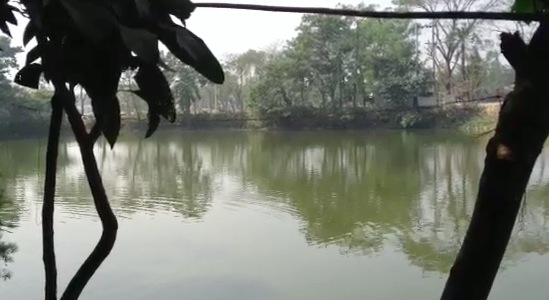Unnoticed Geology, Unanticipated Consequences
The story of the Columbia project dated back to November 1998, when the New York Times ran a story that drew attention to a public health emergency in Bangladesh: arsenic in well water. [1] The Times story, “Death by Arsenic,” chronicled a tale of unintended consequences. What the World Health Organization (WHO) dubbed the largest mass poisoning in history was largely the unanticipated legacy of a massive public health intervention that started in the 1960s. At that time, diarrhea contracted from contaminated surface water was a leading cause of death in Bangladesh, especially among children. The United Nations Children’s Fund (UNICEF) led the way, followed by the government, in drilling millions of medium-depth “tube” wells that tapped into groundwater, protected by its depth from surface contaminants. [2] The well drilling also dovetailed with the green revolution, allowing farmers to grow a second annual rice harvest.

Sadly, an accident of geology and geography turned that intervention into a national health emergency. In the early 1990s, a growing incidence of arsenicosis led to the discovery that runoff from the Himalayas had left high concentrations of naturally occurring and carcinogenic arsenic in the groundwater of the Ganges River delta of Bangladesh. As a result, what was thought to be safe well water was often poisonous. Arsenic in high concentrations had been linked to cancers of the skin, liver, lung, kidney, and bladder. [3] It had also been found to cause diabetes, peripheral neuropathy, and cardiovascular diseases. [4] Symptoms ranged from skin lesions and blackened fingers and toes to scaly skin on palms and soles of the feet, white streaks on the fingernails, swollen limbs, numbness and tingling in the extremities, headaches, confusion and weakness. [5]
A 1998 study by the British Geological Survey (BGS) estimated that 35 million Bangladeshis were exposed to water exceeding the country’s drinking water standard of 50 parts per billion (ppb) and 57 million people were exposed to water exceeding the World Health Organization’s 10 ppb standard. One part per billion is equivalent to 0.01 milligrams of arsenic per liter of water. Though 61 of Bangladesh’s 64 districts were affected, the greatest concentration of arsenic contamination was in the south and east. [6]
At Columbia University, the New York Times article caught the attention of several scientists, including those at the Mailman School of Public Health. As it happened, several had been following the Bangladesh situation for months and were looking for a way to help.
[1] Barry Bearak, “DEATH BY ARSENIC: A special report; New Bangladesh Disaster: Wells That Pump Poison,” New York Times ,November 10, 1998.
[2] Tube wells were narrow, typically less than a foot in diameter. The shafts were often fitted with retaining sleeves to prevent cave-ins. Pump mechanisms could be human- or machine-powered. Most wells used screens or slots in the lowermost sections of pipe to filter sediment. Depth varied according to water table, type of pump, etc.
[3] Smith et al., “Cancer risks from arsenic in drinking water,” Environ Health Perspect . 1992 July; 97: 259–267. See: http://www.ncbi.nlm.nih.gov/pmc/articles/PMC1519547 .
[4] Abernathy et al., “Arsenic: health effects, mechanisms of actions, and research issues,” Environ Health Perspect . 1999 Jul;107(7):593-7. See: http://www.ncbi.nlm.nih.gov/pubmed/10379007 .
[5] World Health Organization fact sheet. See: http://www.who.int/water_sanitation_health/dwq/arsenicun4.pdf
[6] For more on the British Geological Survey study, see: http://www.bgs.ac.uk/research/groundwater/health/arsenic/Bangladesh/reports.html